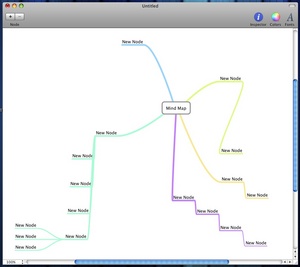Having recently had a furnace break down on me and get replaced, I learned a lot about furnace system types and their costs. In the process, I also learned that selecting a replacement furnace is one of the more difficult and unprepared decisions that most homeowners make.
First of all, the lifespan of most furnaces is between 15 and 25 years. So, after 15 years of your old furnace’s life, it is wise to begin shopping for a new furnace. The best time, obviously, is when you, and no one else, really need a furnace. Late winter to early spring is typically a slow time for furnace sales, as is the period between late summer and early fall. If you do your browsing in those times, you are very likely to find deals on furnaces or price breaks on labor.
When selecting a furnace for your home, be aware that there are three main types. Steam furnaces contain a boiler inside the unit, no circulating pump for the heat, and are usually located in the basement. These furnaces are typically found in older homes, and can be distinguished by the vent-containing radiators that they require per each room to be heated. A glass tube is attached onto the boiler to show its water level (which must be refilled periodically), and the heat is transferred through water pipes. Air conditioning fan units cannot be attached to these furnaces, and so most homes with these furnace types have air conditioners in windows.
Hot water furnaces are similar to steam furnaces, with a boiler inside the unit and heat transferred through water pipes. Any air conditioners are also placed in the house windows. Radiators are required per each room to be heated, but the radiators are not vented. Unlike the steam furnace, the hot water furnace contains a circulating pump in line with the pipe near the boiler. These furnaces are placed in the basement.
The third, and most common, type of furnace is the forced air furnace. In this case, the furnace blows air through duct work and registers. The furnace can be located in the basement or on the ground floor, and the air conditioning unit, if any, is located outside. In the case that there is an air conditioner, the furnace is labeled as a split system, since it can blow warm or cold air.
There are two combustion choices to choose from with forced air heating. These choices will affect the energy efficiency of the furnace, and ultimately your out-of-pocket heating expense. The two combustion choices are either mid-efficiency combustion or high efficiency condensing.
With a mid-efficiency combustion furnace, you obtain 80 AFUE (annual fuel utilization efficiency) at an average yearly cost of $1770 in gas. Heat and moisture go out the chimney through a metal flue pipe. Air inside the house is used for combustion. There is substantial loss of heat with this kind of furnace. Also, dryers, bathroom exhaust fans, and other exhaust items may interfere with the functioning of the furnace.
A mid-end condensing unit obtains around 93% AFUE at an average yearly cost of $1530 in gas. There is no chimney required, and much of the heat is reclaimed by a secondary heat exchanger. The combustion unit is sealed, meaning that outside exhaust has no effect on the furnace. The unit vents out a sidewall through PVC piping, where from it also draws its air. Moisture is produced as the combustion condenses in a secondary heat exchanger, which then typically drains into a basement floor drain. Nearly all the heat is extracted by this process, which is why plastic pipes can be used to conduct the final exhaust outside (since that exhaust is barely warm).
There are also high-end condensing units, which save even more money on gas per year, allowing an average yearly cost of $1500. These units are rated at 96 AFUE and typically contain a variable speed fan motor, which saves you an additional average of $75 per year on electricity. They also allow for very quiet unit operation.
With this information in mind, you can be better prepared to shop for and compare furnace units.






